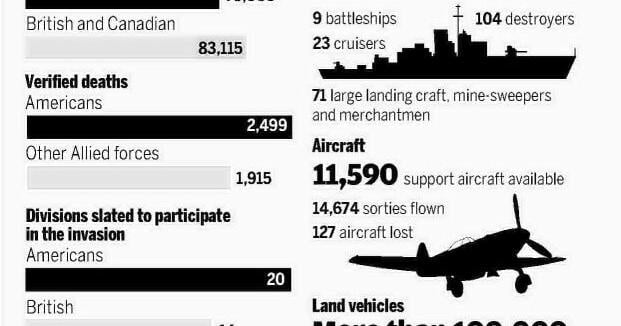In the weeks leading up to D-Day, the Allies conducted a complex deception campaign designed to fool the Germans about the intended invasion target. The most logical place in Europe for the invasion was Calais, northeast of Normandy and the closest spot to Great Britain across the English Channel.
The Allies created a largely phantom fighting force, the First U.S. Army Group, headed by Gen. George Patton, whom the Nazis considered to be the most likely person to lead an invasion. The deception employed inflatable tanks and planes and hollow wooden structures meant to resemble brick-and-mortar military installations.
June 5, 1944: On the morning of June 5, amid bad weather fears, U.S. Gen. Dwight D. Eisenhower, the supreme commander of Allied forces in Europe, gave the approval for Operation Overlord. About 6,000 landing craft, ships and other vessels carrying more than 150,000 troops left England for France. That night, about 1,000 aircraft filled with more than 15,000 paratroopers landed in drop zones in Normandy to begin missions behind enemy lines. About 12,000 aircraft were mobilized to provide air cover and support for the invasion.
People are also reading…
June 6, 1944: Early in the morning, Allied bombers took off to attack targets around the beachhead. The amphibious landings, called Operation Neptune, also were preceded by extensive naval bombardment. The seaborne units began to land about 6:30 a.m. At 3 a.m. ET on June 6, U.S. President Franklin D. Roosevelt received the call that the invasion had commenced. He later notified the nation by radio, saying that “at this poignant hour, I ask you to join with me in a prayer.” On the coast of Normandy, the British and Canadians landing on Gold, Juno and Sword beaches overcame light opposition. The Americans at Utah did as well.
• The Allies invade occupied France
• Some 175,000 military personnel members of British, American, Canadian, French, Polish and Norwegian descent participate in the first 24 hours of the Normandy invasion





